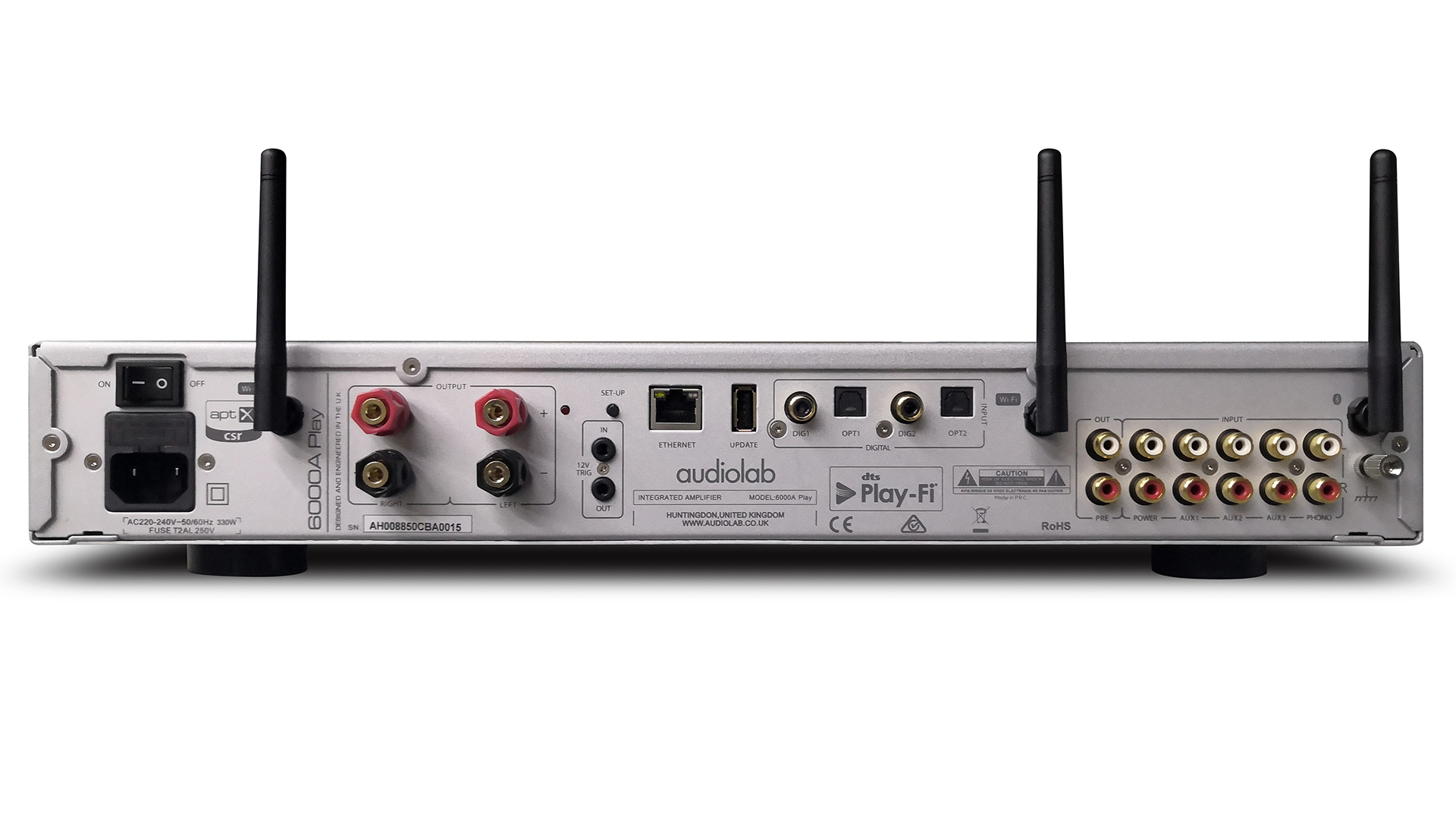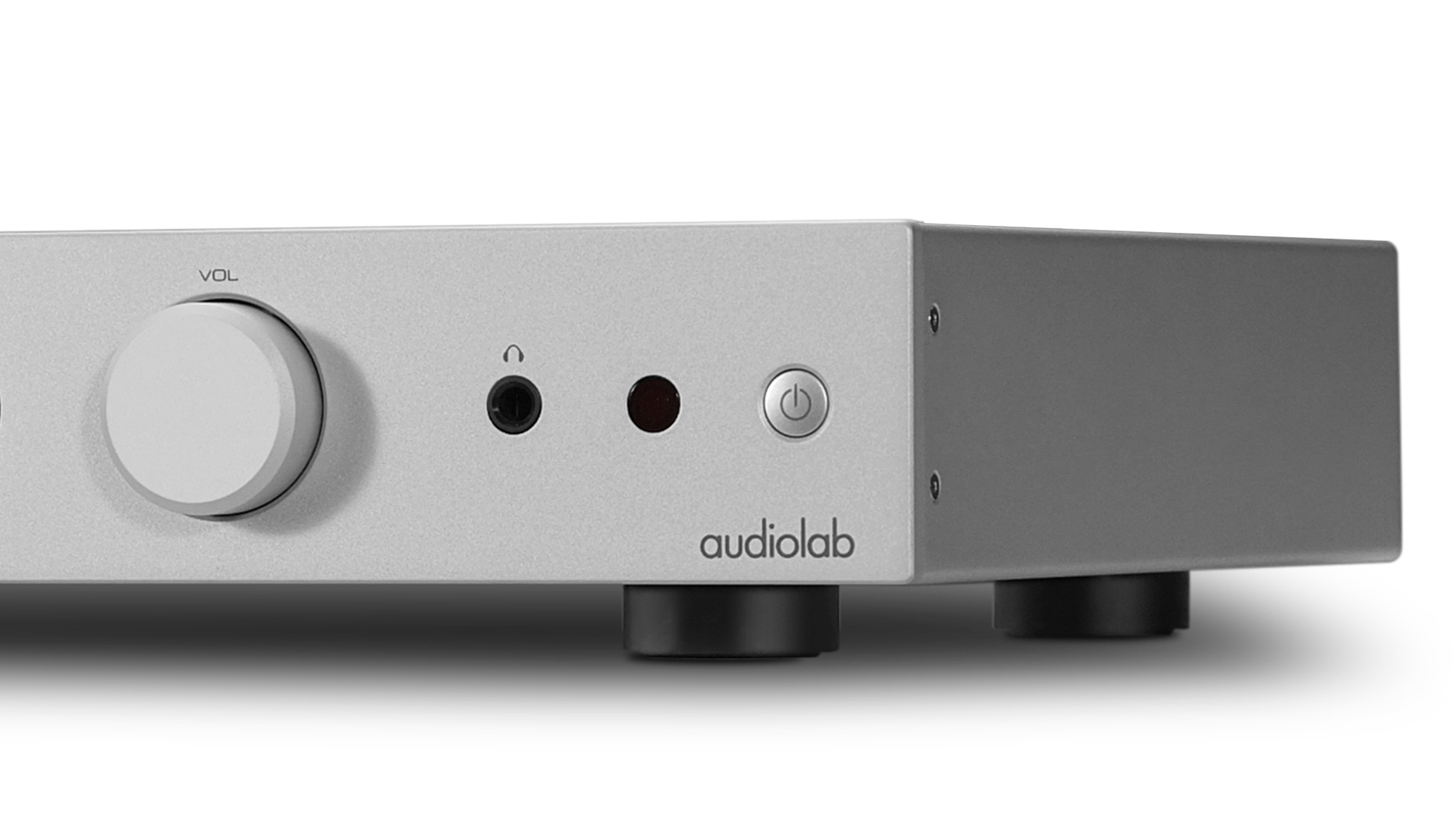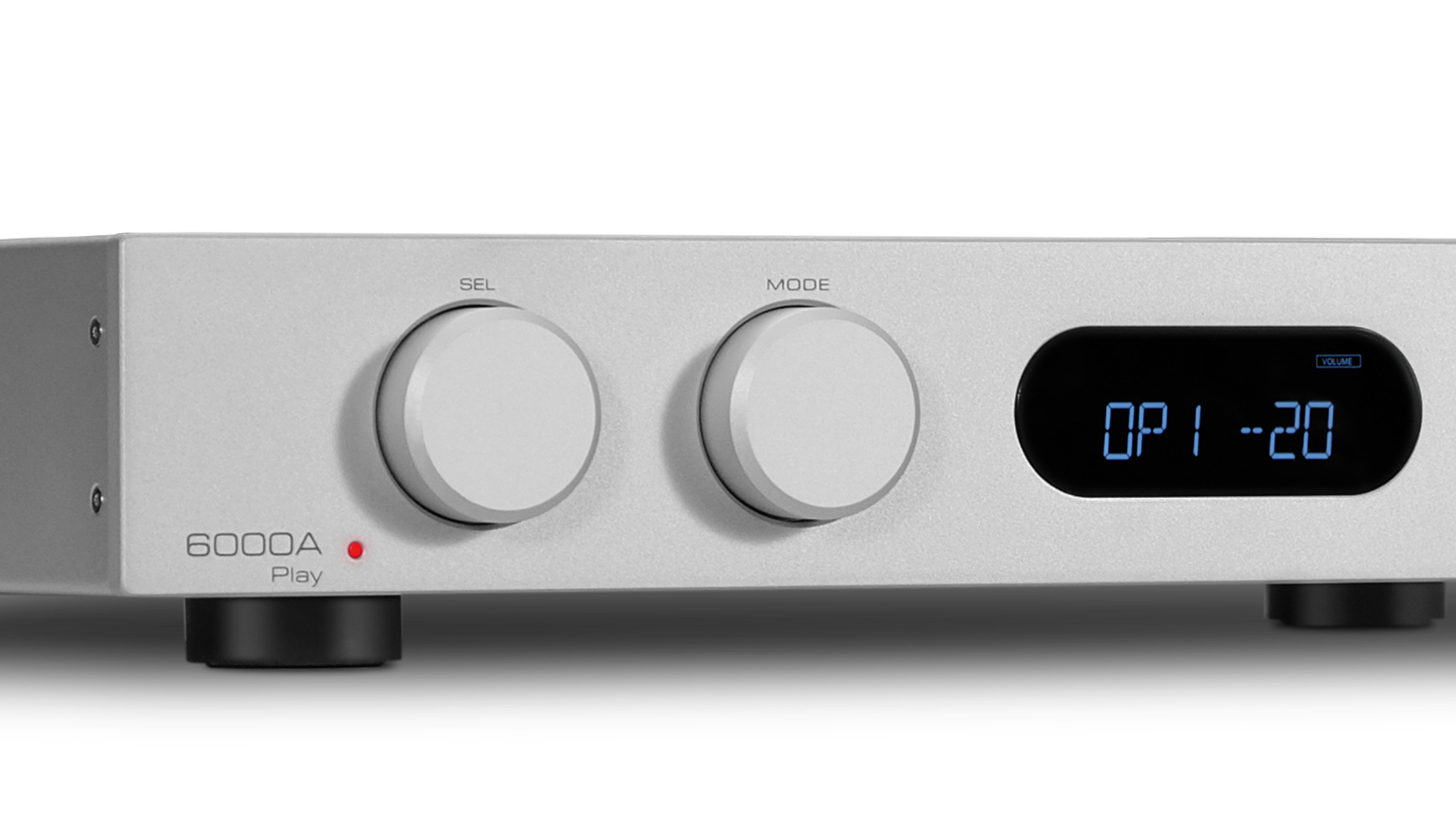What Hi-Fi? Verdict
A well featured and entertaining streaming amplifier that delivers on almost all fronts
Pros
- +
Clear, articulate, punchy listen
- +
Tight, potent low-end
- +
Lots of features
Cons
- -
Needs greater subtlety
- -
Display is limited
Why you can trust What Hi-Fi?
We can just imagine the Audiolab team gathered together (back when gatherings were allowed), discussing the concept of the 6000A Play. After all, fusing together the company’s five-star midrange integrated amplifier and its What Hi-Fi? Award-winning budget streamer in one affordable, just-add-speakers streaming system seems to make perfect sense.
The old adage teaches us that two wrongs don’t make a right, but surely two rights make a right? Streaming amplifiers are indeed hot stuff in the marketplace today, with the likes of Marantz, Arcam, Bluesound and Quad all representatives around this price point. The competition is heating up, and Audiolab is bringing some heat of its own with the 6000A Play.
Features

The 6000A Play combines the 6000A’s amplifier circuitry with the 6000N Play’s streaming smarts, which is as good a starting point as any. The former delivers 50W of Class A/B power amplification into 8 ohms, while the latter is founded on the established DTS Play-Fi technology, a wireless, hi-res, multi-room platform that puts a whole world of music streaming at your fingertips.
The free Play-Fi app is a portal into music streaming services, including Spotify, Tidal, Amazon Music, Qobuz, Deezer, TuneIn radio and more – and also provides access to local files on your control device and networked files on NAS drives (up to 24-bit/192kHz). While wi-fi is an option, we would take advantage of the 6000A Play’s ethernet port for extra stability.
Favourite playlists and radio stations can be pinned as shortcut presets within the app, and multiple Play-Fi-supporting products (available from a range of brands) can be grouped together in various zones for multi-room playback and control.

Ethernet Yes
Wi-fi Yes
MM phono input Yes
Inputs Coaxial x2, optical x2, line-level RCA x3
aptX Bluetooth Yes
DTS Play-Fi Yes
Finishes x2
Dimensions (hwd) 44.5 x 8 x 33cm
Weight 7.9kg
Thanks to Works With Alexa support, those who are now accustomed to shouting demands at their devices can use their voice to control the 6000A Play, providing it’s hooked up to an Amazon Alexa-equipped device.
Streaming may be taking the music (and hi-fi) industry by storm, but vinyl and other physical media aren’t going anywhere – as Audiolab knows. Traditionalists are well catered for through the 6000A Play’s MM phono input, while a further fine spread of three line-level, two optical and two coaxial inputs can collectively accommodate CD players, CD transports, TVs or practically any other analogue or digital source. Last but not least, aptX Bluetooth offers an easy offline way to stream from your phone or music player, too.
The digital inputs feed into the same family of ESS Sabre32 Reference DAC chips found in Audiolab’s celebrated M-DAC almost a decade ago. The company has been honing the implementation inside its digital products since, and here is no different.
All sources, save for those hooked up to the legacy analogue sockets, are privy to Audiolab’s three user-selectable digital audio filters – ‘fast roll-off’, ‘slow roll-off’ (our favoured mode) and ‘minimum phase’ – offering some level of customisation based on your partnering equipment and preference.
Build

Two further pairs of line-level connections mean that the 6000A Play can operate solely as a power amplifier connected to an external preamp, or as a source and pre-amp feeding a separate power amplifier. This functionality is managed by one of the three control dials on the front. The other two knobs are for switching sources and adjusting volume.
While a small OLED display might be acceptable on a stereo amplifier, it’s harder to justify on a streaming product, where you are more likely to want to see playback information. Alas, the 6000A Play displays input and volume over playback info, though at least that’s more than you get from the entirely screen-less 6000N Play dedicated music streamer. Audiolab might argue that all this information is displayed on your control device’s screen, via the DTS Play-Fi app or your music service, but we can imagine it being a bone of contention for some.
Sound

The 6000A Play’s frontage isn’t the only similarity between it and the 6000A – the streaming amp also shares its sibling’s penchant for clarity, cleanliness and punch. It is startlingly smooth and articulate, while also being capable of spicing things up with a healthy dose of energetic drive.
Play Kanye West’s Blood On The Leaves and the Audiolab isn’t short of punch and attack, and it also has a copious and well-controlled low-end presence. It’s an arresting rendition, the assault of horns is authoritative, the raw synths are cutting, and both West’s auto-tuned rap and Nina Simone’s vocal samples are sharp and lucid.
Similarly, as we play 65daysofstatic’s Unmake The Wild Light, the Audiolab’s performance is energising, as it rolls through melodic synths and charges through denser, more demanding sections.
It’s not the most spacious listen, but it organises each strand coherently. This all holds true through the digital connections too: the insight and character is well retained, evidence of the effort that Audiolab put into the digital stage paying off.
The 6000A Play is, in a word, fun. There’s certainly more than a suggestion of forwardness and its upbeat character brings benefits to tracks that demand it. At times, however, we’d readily swap some of that for more spaciousness and sincerity. Play Nick Cave’s beautiful Bright Horses and we find ourselves craving greater subtlety and dynamic attention from the heavy-handed piano and surging strings – the kind delivered by the class-leading Marantz PM7000N, for example.
The Audiolab communicates every element with the clarity and crispness you’d expect at this price and beyond, yet it struggles to truly get under each note’s sentiment, just missing the heart and soul of the piece. The Marantz is the pricier machine, but the extra spend is more than justified by its deeper insight and tighter rhythmic handling.
Verdict
On paper, the Audiolab 6000A Play shows plenty of promise and that mostly translates in practice. A well-featured streaming amplifier that is easy to use and entertaining to listen to, it offers a decent option for anyone looking for a simple just-add-speakers machine.
It may not quite reach the class-leading standard of the products in Audiolab’s 6000 Series with which it shares its DNA, but this is still an excellent idea well executed.
SCORES
- Sound 4
- Features 5
- Build 4
MORE:
Best hi-fi systems 2020: micro, hi-fi, vinyl
Read our Audiolab 6000N Play review
Read our Audiolab 6000A review
Read our Marantz PM7000N review
What Hi-Fi?, founded in 1976, is the world's leading independent guide to buying and owning hi-fi and home entertainment products. Our comprehensive tests help you buy the very best for your money, with our advice sections giving you step-by-step information on how to get even more from your music and movies. Everything is tested by our dedicated team of in-house reviewers in our custom-built test rooms in London, Reading and Bath. Our coveted five-star rating and Awards are recognised all over the world as the ultimate seal of approval, so you can buy with absolute confidence.
-
bart Interesting review, I enjoyed reading it! You compare it to the Marantz PM7000N, which in my opining is certainly a step up budget wise, especially as the 6000A can be found for around €650+ in sale. Which amp (with or without integrated pre-amp), would you advice over of the 6000a in the same price category? How would you for instance compare it to the Marantz PM6007 or even the 6006?Reply
Cheers, B -
mfwalker1 Reply
Ticks a lot of boxes for me. Except the stupid "mode" dial. 99% of users will use this as a system centred integrated amp, as it was designed to be. I can't imagine ANYBODY using this as a power amp only, possibly a pre.... a waste of front panel real estate - these functions should be buried deep down in in the menu where they belong...What Hi-Fi? said:Audiolab’s one-box blend of two five-star components makes for an entertaining streaming amplifier.
Audiolab 6000A Play : Read more
Audiolab have persevered with this unnecessary "mode" switch for quite a few models now. Someone at AL HQ obviously thinks it's important, but have they done their user research? Who clicks that thing?
Speaking of menu. I downloaded the manual, There's an obscure reference under 'menu' to PPL DG2 and PPL OP2"normal" and "wide" without the slightest explanation as to what these settings do. A pretty lackluster "manual" all round.
I was quite exited to see "balance" in the system menu. I need this due to my listening environment, and poor sources (old vinyl).
I'd audition, and possibly buy, in a flash if they replaced "mode" dial with "balance" (like NAIM do}.
My 2c. Matt -
Dawei88 Reply
AL HQ precisely know what people need and this mode switch is actually very useful and it is THE extra feature that make me consider to buy this product. Having the possibility to switch to pre power mode to have it part of a AV set up as well (HT bypass) is more than welcome and I hope all other company will include this feature.mfwalker1 said:Ticks a lot of boxes for me. Except the stupid "mode" dial. 99% of users will use this as a system centred integrated amp, as it was designed to be. I can't imagine ANYBODY using this as a power amp only, possibly a pre.... a waste of front panel real estate - these functions should be buried deep down in in the menu where they belong...
Audiolab have persevered with this unnecessary "mode" switch for quite a few models now. Someone at AL HQ obviously thinks it's important, but have they done their user research? Who clicks that thing?
Speaking of menu. I downloaded the manual, There's an obscure reference under 'menu' to PPL DG2 and PPL OP2"normal" and "wide" without the slightest explanation as to what these settings do. A pretty lackluster "manual" all round.
I was quite exited to see "balance" in the system menu. I need this due to my listening environment, and poor sources (old vinyl).
I'd audition, and possibly buy, in a flash if they replaced "mode" dial with "balance" (like NAIM do}.
My 2c. Matt -
njprrogers I am a little confused... is the amplification part of the Play not the exact same as the 6000A? And the streaming circuitry the same as the 6000N? Or is the sound of this amp in some way inferior to the standalone amp?Reply
I would have expected the two 5 star products which the form the basis of the Play to have the Play yield a similar 5 star review... -
spacecadet Reply
I have to agree with this comment. It doesn't make any sense to mark the Play down compared to the 6000A. I know the Play is 300 quid more expensive but it contains the innards of the £399 6000N.njprrogers said:I would have expected the two 5 star products which the form the basis of the Play to have the Play yield a similar 5 star review...
Of course all scores are subjective with a nod towards objectivity. If there is a device at the same price point that also combines stream and amplification that knocks the 6000A Play down a hotch at the the £899 price point we'd like to hear it.

